A Khmer pagoda in Tra Vinh province is known for its distinctive entrance resembling a cave, which has earned it the popular name “Chua Hang” (Cave Pagoda). The site is also home to a centuries-old woodcarving craft that creates artistic works considered national treasures.
Unique architecture and a sanctuary for birds
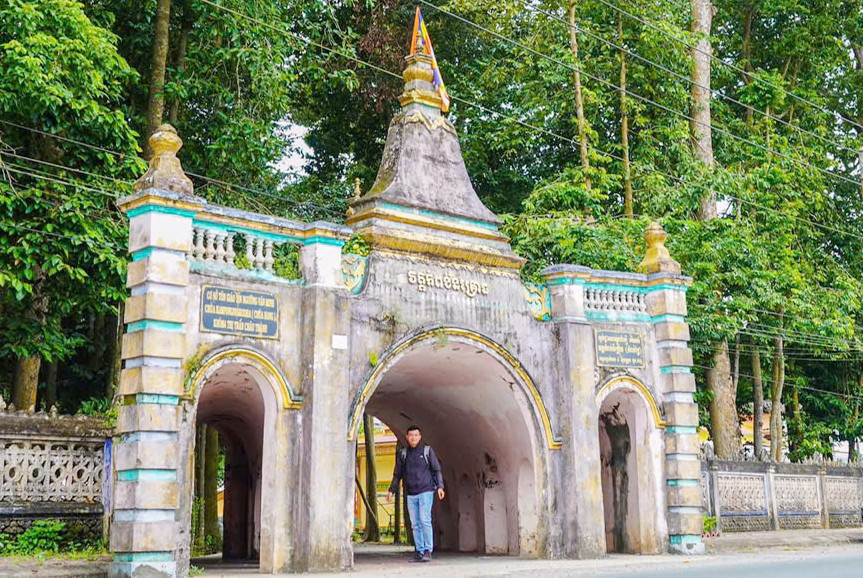
Chua Hang in Tra Vinh province. Photo: T.X
Tra Vinh is famous for its Khmer pagodas, many of which are admired for their intricate and exquisite architecture. Each pagoda showcases unique features, characterized by elaborate and ornate designs.
For the Khmer community, the pagoda is not only a sacred place for spiritual worship but also a cultural center. One of the most renowned pagodas in Tra Vinh is Chua Hang, located in Chau Thanh district.
Chua Hang, officially named Wat Kompong Ch’ray, earned its nickname due to the cave-like structure of its main gate. As one of the oldest Khmer pagodas in Tra Vinh, it carries both historical and religious significance.
Originally, the pagoda faced eastward toward the Long Binh River, where a small pier beneath an old banyan tree allowed villagers to conveniently attend Buddhist services. Hence, it was named Wat Kompong Ch’ray, meaning “Pagoda by the Banyan Tree Wharf.” Later, an additional western gate was constructed, facing what is now National Highway 54.
This side gate features a triple-arched design with an 8-meter-thick wall, forming one large central arch and two smaller side arches resembling a cave, giving rise to the name Chua Hang (Cave Pagoda).
The pagoda's arched entrance is a unique architectural highlight, unlike any other Khmer pagoda in the region, and also embodies profound religious symbolism.
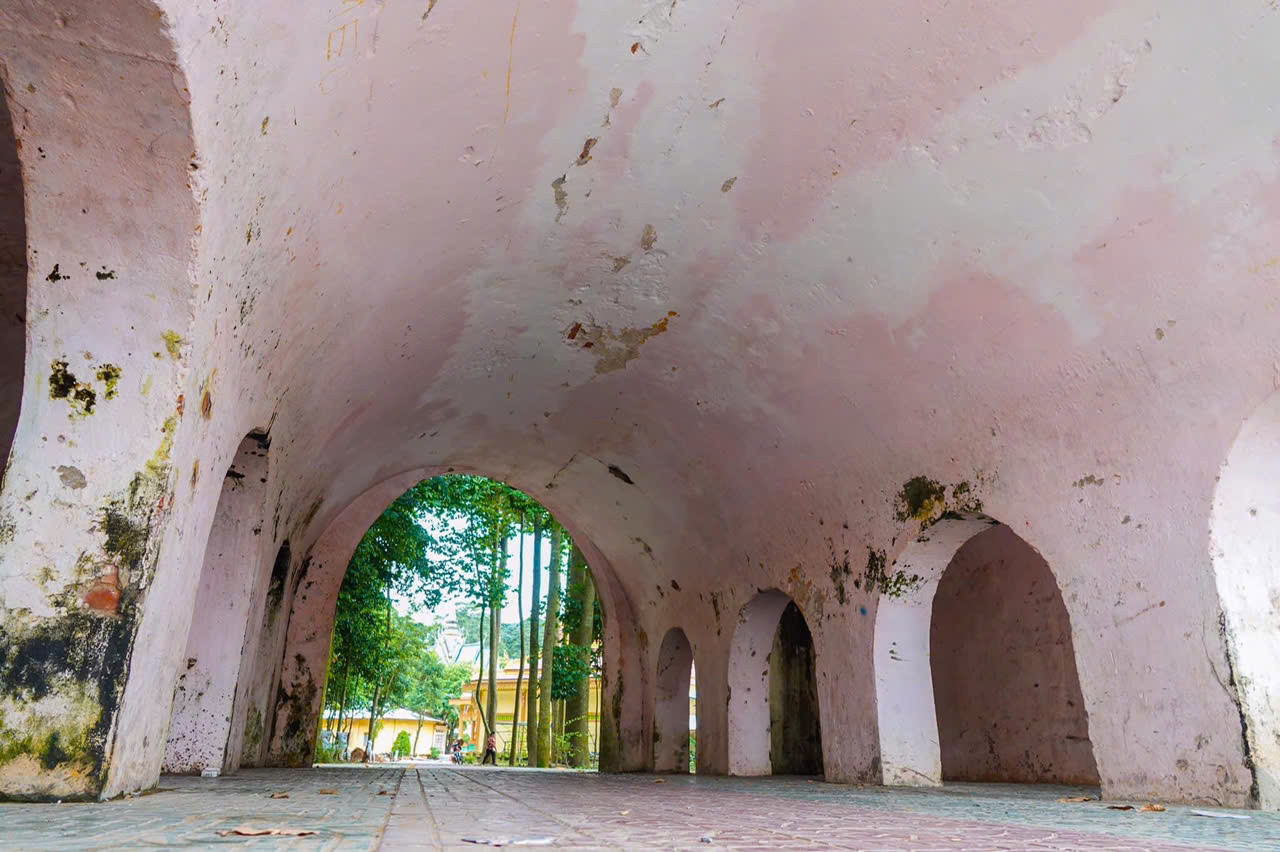
Upon passing through the distinctive gate, visitors enter a 7-hectare green sanctuary filled with century-old sao and dau trees, their trunks so wide they require two people to embrace. High in the canopy, flocks of birds and storks have made their nests. During dawn and dusk, the sky is filled with their flapping wings and calls, creating a lively yet serene atmosphere.
According to Venerable Thach Suong, the 23rd abbot of Chua Hang, the pagoda was founded in 1637. It was once home to large colonies of bats that hung from the trees by day and blanketed the sky in search of food by night. However, during the 1968 Tet Offensive, the pagoda was heavily damaged by bombings, and the bats never returned.
After the country’s reunification, in 1977, monks began rebuilding the pagoda and replanting trees. Around three years later, the birds began to return and build nests.
“When the birds came back, the monks and villagers saw it as a good omen. Everyone worked together to protect and support them so they could thrive,” said Venerable Thach Suong.
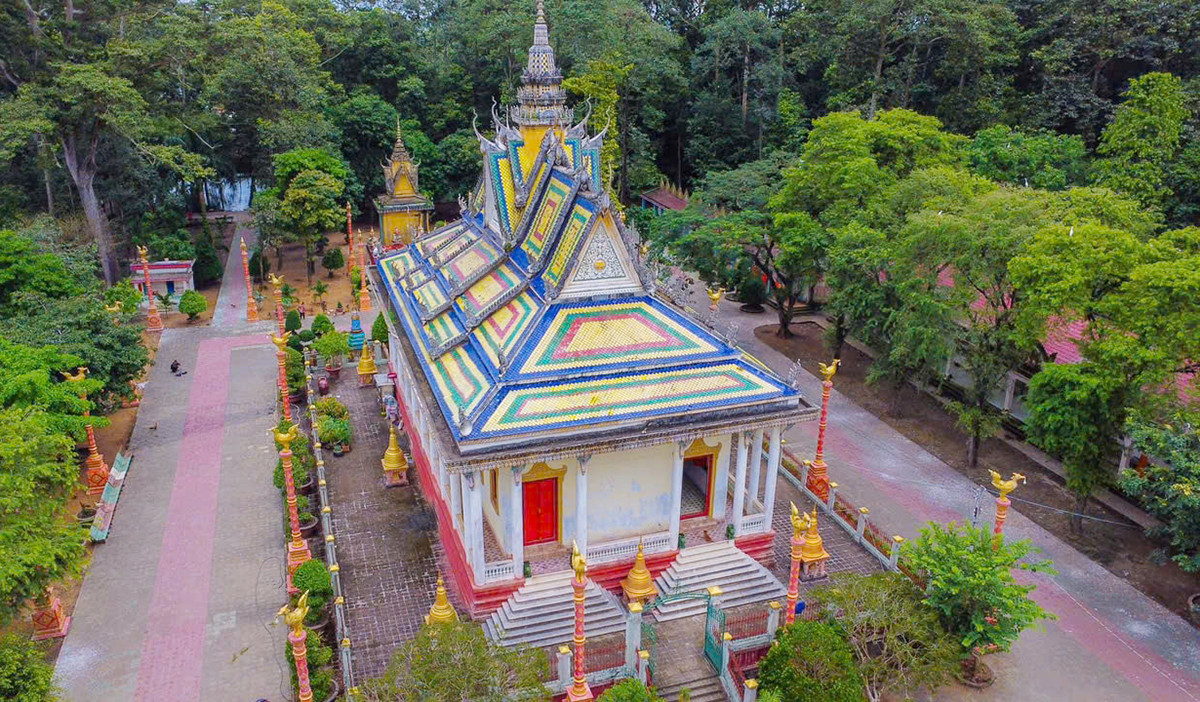
The main hall of Chua Hang as seen from above. Photo: T.X

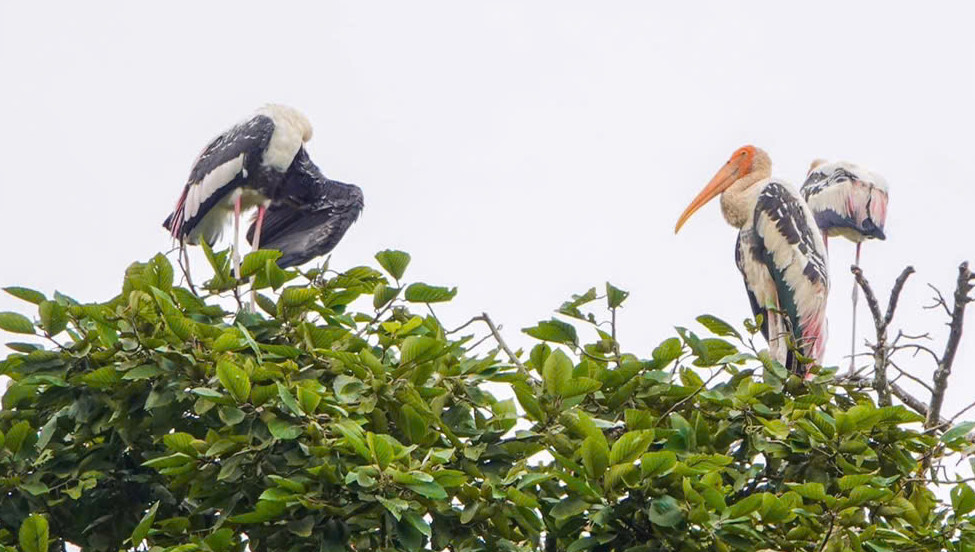
Today, thousands of birds find refuge at the pagoda, especially white storks, red-necked storks, herons, and even rare species like the Oriental darter, which is listed in the Red Data Book.
Having lived close to humans for many years, these birds have become quite bold. Every day, as the monks conduct rituals, the birds appear to join in the chanting and meditation.
A unique woodcarving tradition within the pagoda
Like other Khmer pagodas, Chua Hang functions not only as a religious sanctuary but also as a center for moral education and the preservation of Khmer cultural and artistic traditions.
One of the main draws for visitors is its woodcarving workshop, which has been active for over 30 years and is recognized for producing high-quality artworks across Vietnam’s fine arts community.
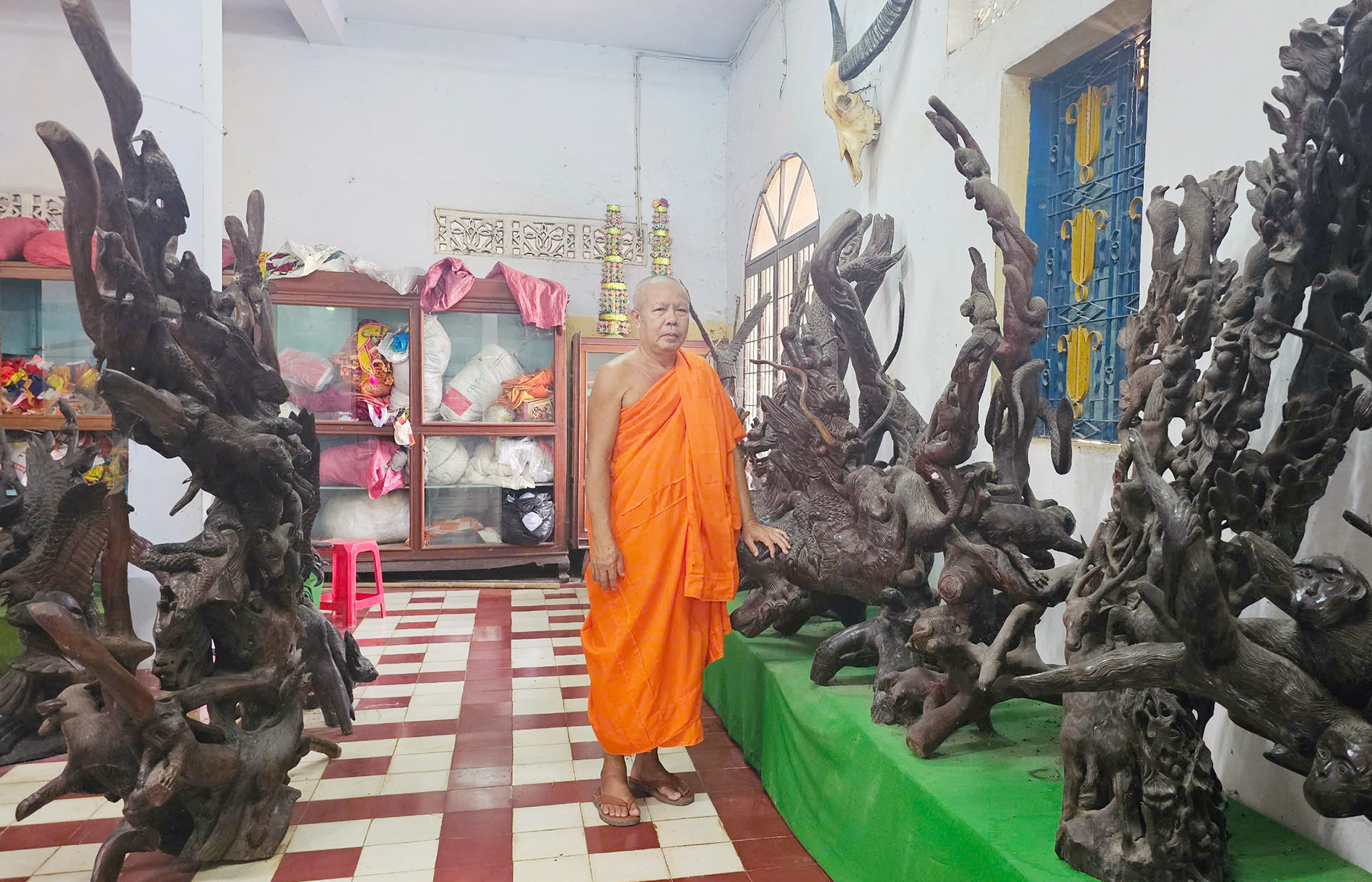
In the temple grounds, visitors can view wooden sculptures of birds, animals, and farmers, all uniquely crafted.
Venerable Thach Suong recounted that during a visit to a pagoda in Cau Ke district (Tra Vinh), he was impressed by an artisan who transformed tree roots into valuable furniture. Inspired, he decided to reuse roots of ancient trees destroyed by wartime bombs to create wooden art.
In 2002, the pagoda established a workshop and invited artisan Thach Buol to teach. Initially, four monks enrolled. Over time, more monks and local Khmer youths joined. Today, more than 100 individuals have mastered woodcarving, with over 1,000 pieces produced and the pagoda’s reputation spreading widely across the Mekong Delta.
The hallmark of Chua Hang’s sculptures lies in preserving the natural form of tree roots without using chemicals or heat treatment. Each piece is shaped according to the wood’s original contours and guided by the artist’s emotional inspiration.
Some artworks are compact, while others span dozens of meters and weigh several tons, gracing temples and luxury hotels. Most pieces reflect the traditional artistic identity of southern Vietnam’s Khmer community.
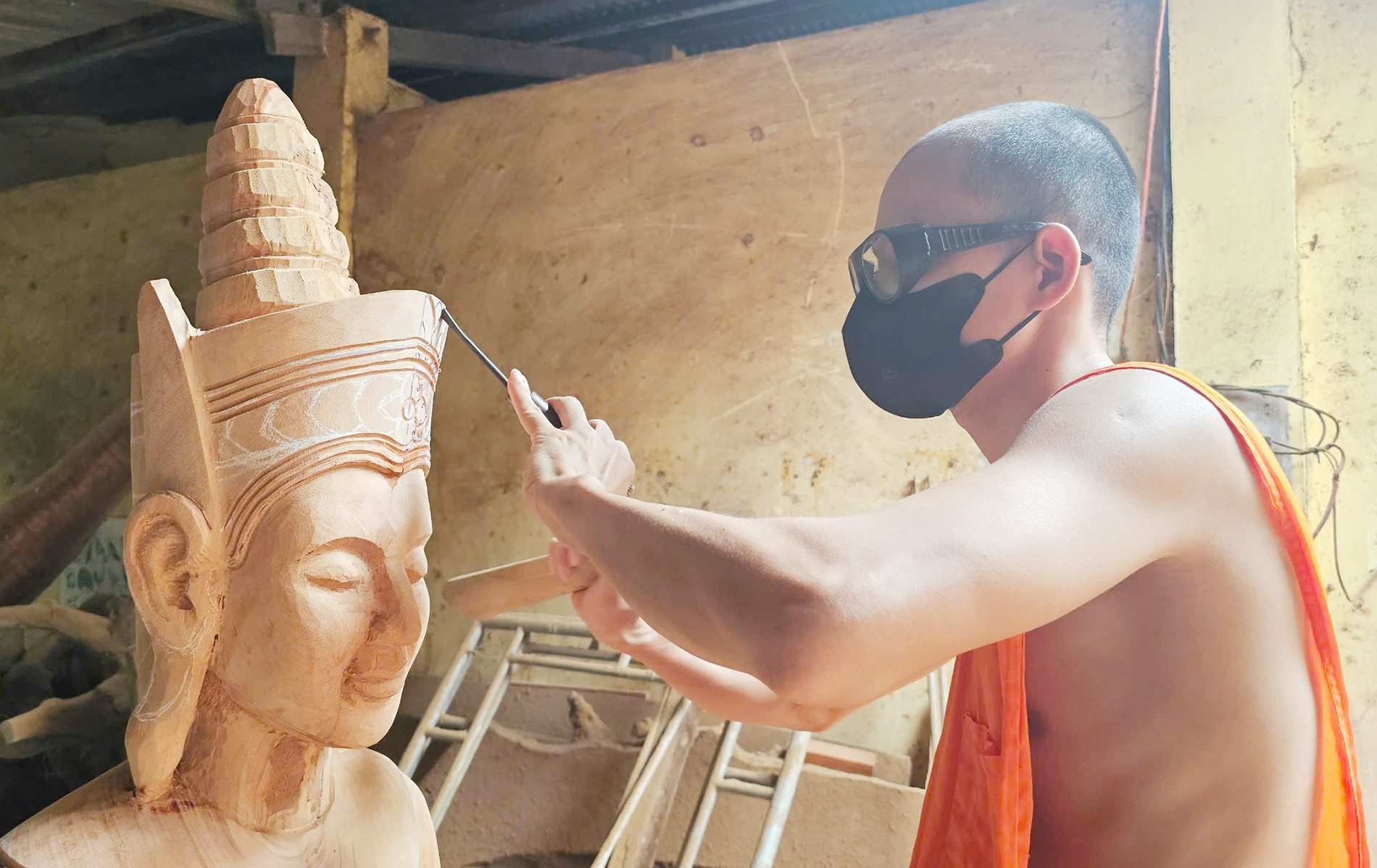
Son Soc, a 50-year-old from Tra Vinh City, began studying and working in the pagoda’s carving workshop more than 20 years ago. He has since trained many monks in the art.
One of his most celebrated works is “Nhat Long Giang,” which set an Asian record.
“I collaborated with four experienced monks for nearly two years to sculpt this piece from an ancient 300-year-old tree root weighing 8.7 tons,” he said.
The front features the 12 zodiac animals surrounded by 12 doves symbolizing peace and prosperity. At the center is a large clock framed by imagery including Vietnam’s map, the Truong Sa and Hoang Sa archipelagos, Ba Dinh Square, and the Tra Vinh welcome gate. Surrounding the clock are 12 stylized Lac birds, symbolizing the cultural legacy of the Vietnamese people.
The back showcases carvings of 70 animals from land, sea, and air, representing natural abundance and a call for conservation of rare species and resources.
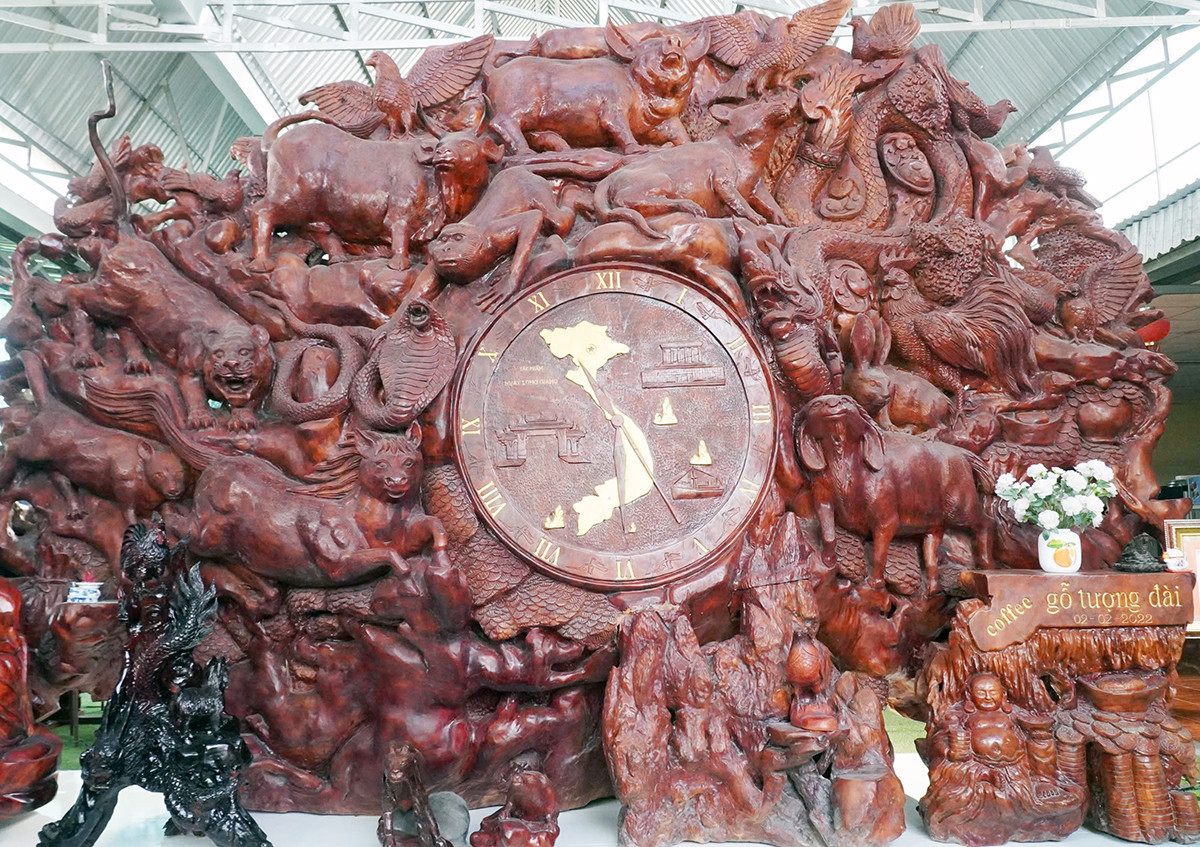
Front of the sculpture “Nhat Long Giang” created by monks at Chua Hang. Photo: T.L
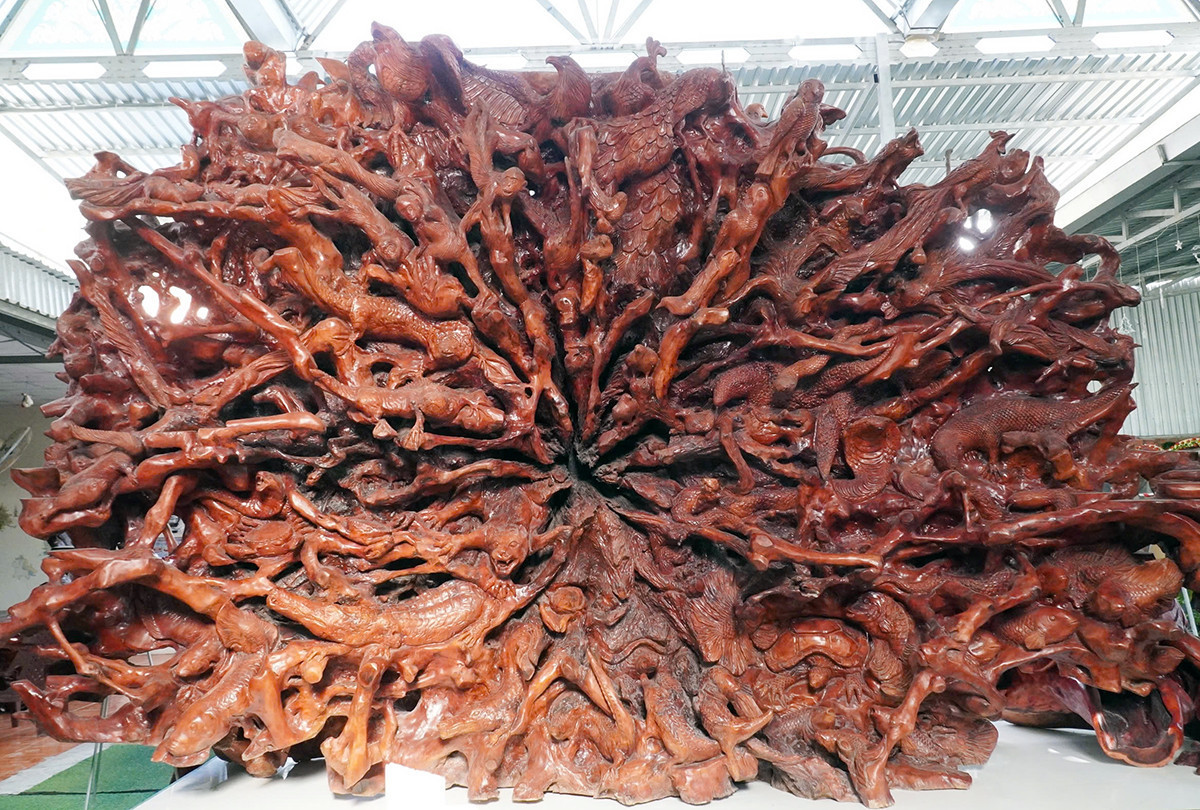
The clock on the sculpture is set to 11:30, symbolizing the moment of victory on April 30, 1975, when the revolutionary flag flew over Independence Palace, marking the success of the Ho Chi Minh Campaign and the reunification of the country.
Today, numerous woodcarvings are displayed throughout Chua Hang, drawing visitors from all over who come to admire and photograph the artwork.
Hoai Thanh